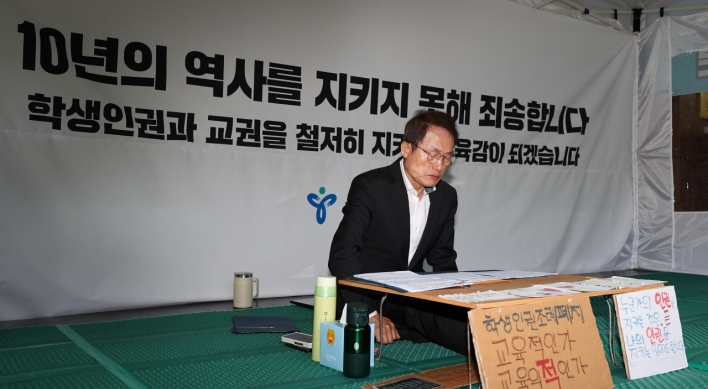Japan’s Unit 731 killed thousands of Chinese with experimental infection: paper
By KH디지털2Published : Oct. 30, 2013 - 18:10
The Imperial Japanese Army’s infamous medical research unit practiced secret human experiments with infected fleas, killing some 2,500 Chinese civilians during the second Japanese-Chinese War, a paper claimed Wednesday.
Suh Yi-jong, a professor of sociology at Seoul National University, unveiled evidence of Unit 731’s new war crimes based on classified documents, including a record written by one of its members.
The clandestine biological and chemical warfare research team unleashed about 10,000 fleas weighing 5 grams, infected with bubonic plague in Jilin Province on June 4, 1940, according to the paper.
In Nong’an County alone, eight people were allegedly killed within three weeks after the release and the causalities increased to 607 within 100 days.
The total deaths were estimated at 2,500 in the affected areas including Xinjing, Qiangguo and Zhengjiatun, the professor claimed.
Unit 731 based in northeastern China is notorious for carrying out lethal biological and chemical experiments on civilians and war prisoners.
Suh noted that the paper is based on classified documents including a paper written by Kaneko Junichi, a bomb expert major at Unit 731. The documents have been kept in the Unit 731 Museum in Harbin, which was home to the army.
The purpose of the lethal test was conducted to verify the virus’ impact and to minimize the army’s damage from war by controlling the mass infection, Suh wrote in the paper.
“The unit carried out tests in Nong’an in advance to brace for large-scale germ warfare in mainland China,” Suh said.
The first official title of the unit was Ishii Unit, though it was renamed the Epidemic Prevention and Water Purification Department of the Kwantung Army, more commonly known as Manchukuo Unit 731. The simplified title, Unit 731, came to common usage after 1941.
Numerous reports and historical documents have shown that other human subject research conducted by the unit include burying people alive, putting them in high-pressure chambers and injecting air into their veins.
By Suk Gee-hyun
(monicasuk@heraldcorp.com)





![[KH Explains] No more 'Michael' at Kakao Games](http://res.heraldm.com/phpwas/restmb_idxmake.php?idx=644&simg=/content/image/2024/04/28/20240428050183_0.jpg&u=20240428180321)












![[Herald Interview] Mistakes turn into blessings in street performance, director says](http://res.heraldm.com/phpwas/restmb_idxmake.php?idx=652&simg=/content/image/2024/04/28/20240428050150_0.jpg&u=20240428174656)
